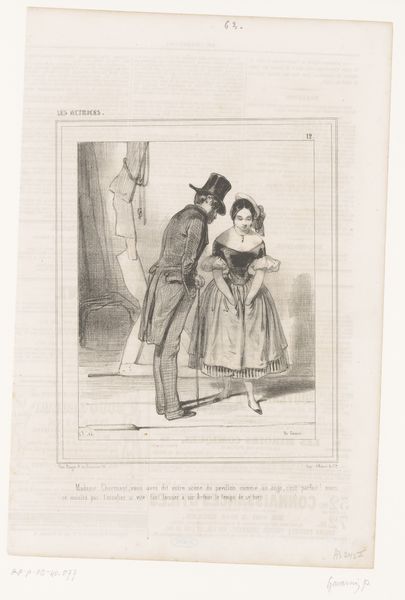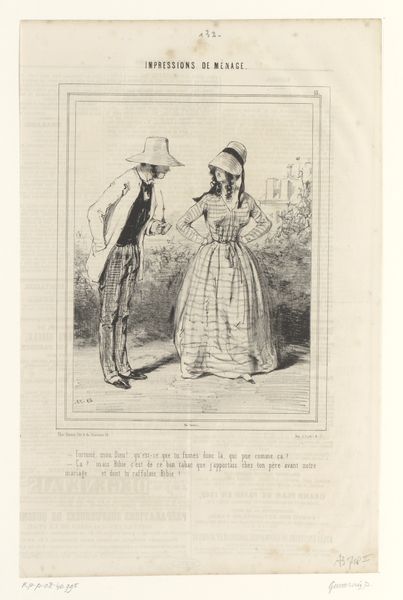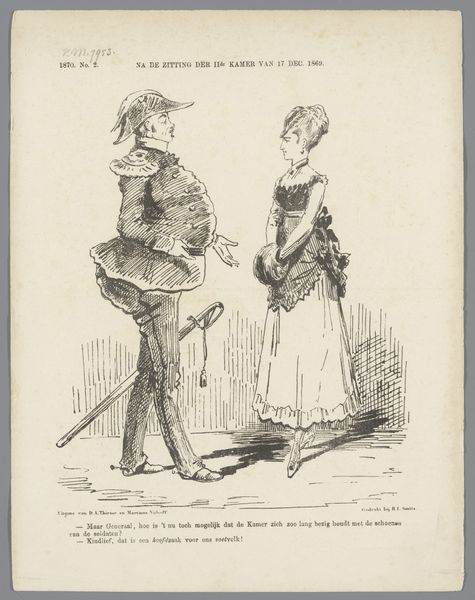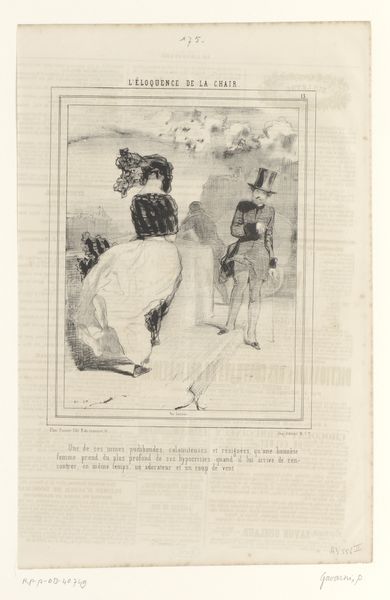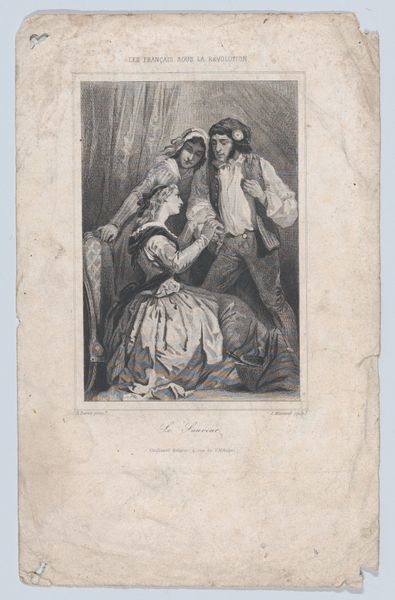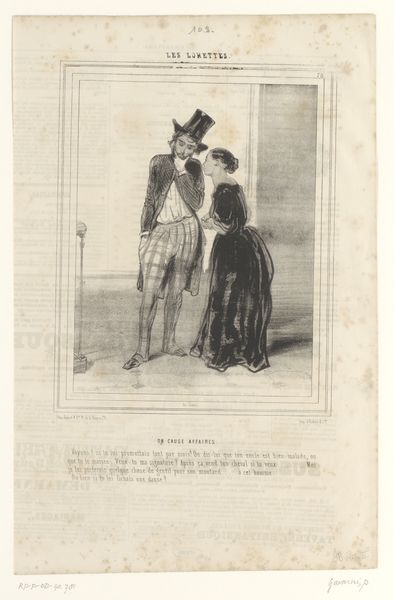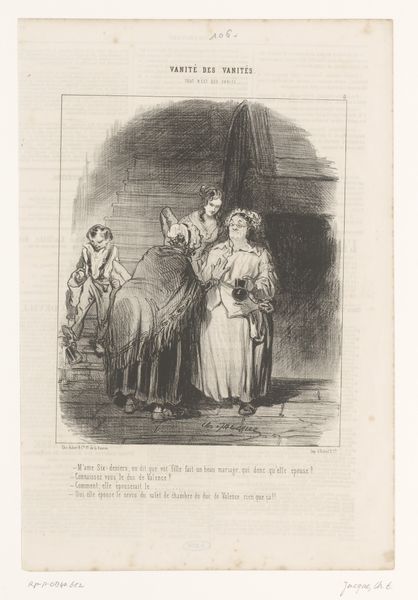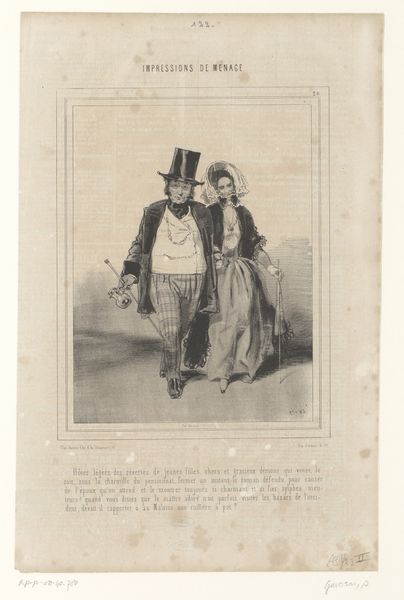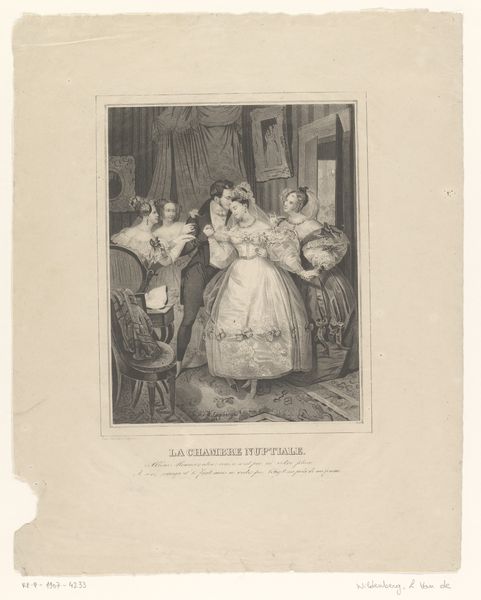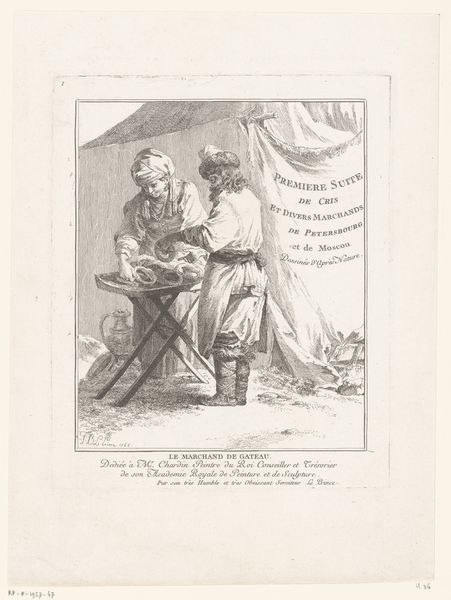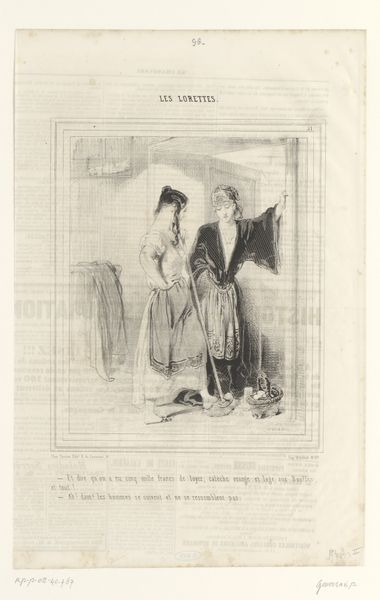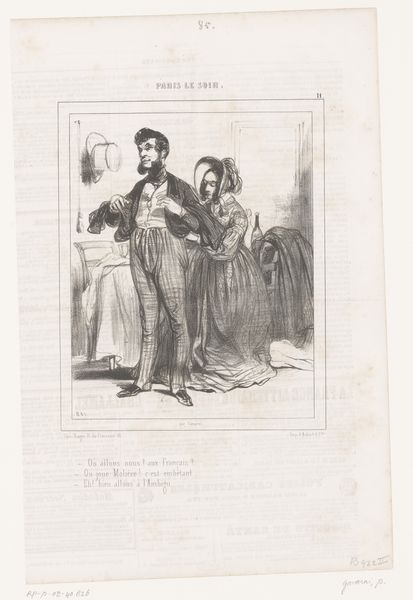
drawing, lithograph, print
#
portrait
#
drawing
#
lithograph
# print
#
figuration
#
romanticism
#
genre-painting
Dimensions: height 321 mm, width 242 mm
Copyright: Rijks Museum: Open Domain
Curator: This print, titled "Actrice met man en kind na een scène," or "Actress with husband and child after a scene," dates to 1838 and is credited to Paul Gavarni. The Rijksmuseum houses it in its collection. It's rendered as a lithograph. Editor: It immediately strikes me as rather melancholy. The grey tones and the postures of the figures seem to carry a weight of disappointment or fatigue. Curator: Indeed. Notice the contrasting treatment of line. The actress is described with a curvilinear grace in her dress. Whereas her husband, seated, is much more angular in his form, almost hunched. This use of form and contrast gives dimension and meaning to the piece. Editor: Beyond the forms, though, the actress’s costume acts as a cultural signifier. It points to a specific socio-economic reality of theater life, then. Not always the glamour one might imagine. The husband, spectacles perched on his nose, looks worn. The fallen flowers at her feet echo perhaps lost aspirations or the transient nature of success. Curator: Precisely! And that’s where it becomes powerful. Look at the composition again. See how Gavarni guides our eye. The delicate lace on her dress, sharply rendered through lithography, draws attention to her elevated status on stage. Yet it clashes with the somewhat coarse environment of what looks like a dressing room after the play is over. This clash reflects social themes. Editor: It's a fascinating contrast to juxtapose this rather ideal representation with the reality hinted at. A real rupture between her idealized performance versus her probable domestic situation. I see it reflecting broader anxieties about fame, family, and fulfillment. Curator: I see a semiotic layering wherein Gavarni, via these techniques, comments implicitly on fame and private lives. Editor: Well, now, examining these contrasts reveals some really interesting context that enriches my appreciation for the scene. Curator: Agreed, a simple figuration indeed unfolds to deliver layered social commentaries on romanticism and reality of performance life in the early 19th Century.
Comments
No comments
Be the first to comment and join the conversation on the ultimate creative platform.
